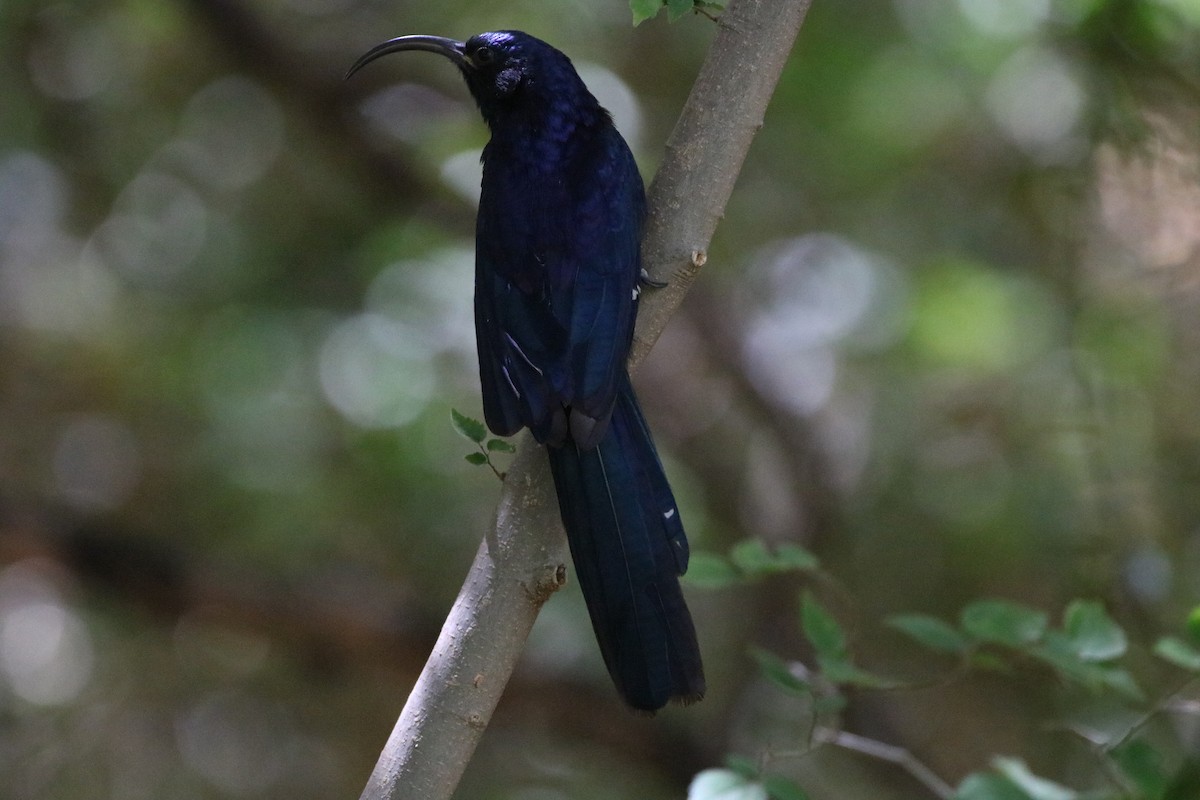
Common Scimitarbill
Common Scimitarbill
The Common Scimitarbill: A Comprehensive Guide to One of Africa’s Most Fascinating Birds
Introduction
The Common Scimitarbill (Rhinopomastus cyanomelas) is a captivating bird species native to sub-Saharan Africa. Known for its distinctive curved bill and iridescent plumage, this bird plays a vital role in its ecosystem. Despite its relatively low profile in the ornithological world, it is a species rich in behavior, ecological significance, and evolutionary intrigue.
In this in-depth article, we will explore every facet of the Common Scimitarbill—from its taxonomy and habitat to its feeding habits, breeding behavior, and conservation status. This guide is designed not only for bird enthusiasts.
Taxonomy and Classification
The Common Scimitarbill belongs to the family Phoeniculidae, a small group of birds commonly referred to as woodhoopoes. Within this family, the genus Rhinopomastus is distinct for its solitary behavior and specialized feeding techniques.
- Kingdom: Animalia
- Phylum: Chordata
- Class: Aves
- Order: Bucerotiformes
- Family: Phoeniculidae
- Genus: Rhinopomastus
- Species: R. cyanomelas
Unlike their more social cousins, the Green Woodhoopoes, Common Scimitarbills are often seen alone or in pairs, a trait that sets them apart behaviorally and ecologically.
Physical Characteristics
The Common Scimitarbill is instantly recognizable due to its long, curved bill, which resembles a scimitar—a curved sword from which it gets its name. This specialized beak is not just for show; it is a highly adapted tool for foraging.
Key Features:
- Size: Approximately 25–30 cm in length
- Coloration: Glossy blue-black or greenish-black plumage with iridescent hues
- Bill: Slender, downward-curved, and dark in color
- Tail: Long and graduated, often used for balance while climbing
This bird’s iridescent feathers help it blend into the dappled light of its woodland habitat, providing both camouflage and a stunning visual display.
Habitat and Distribution
The Common Scimitarbill is widely distributed across sub-Saharan Africa, favoring dry savannas, open woodlands, and thornveld areas. It is particularly abundant in regions with acacia trees, which provide both food and nesting opportunities.
Countries Where Common Scimitarbills Are Found:
- South Africa
- Botswana
- Zimbabwe
- Namibia
- Mozambique
- Tanzania
- Zambia
- Angola
- Malawi
These birds are non-migratory, maintaining year-round territories that they defend vigorously.
Behavior and Diet
One of the most fascinating aspects of the Common Scimitarbill is its foraging behavior. Unlike many birds that feed on the surface, this species uses its curved bill to probe into bark crevices, dead wood, and tree trunks for insects and larvae.
Diet Includes:
- Beetles
- Spiders
- Caterpillars
- Termites
- Ants
- Small invertebrates
Their feeding technique is often compared to that of woodpeckers, although they lack the strong beak and skull adaptations of those birds. Instead, they rely on agility and precision.
Breeding and Reproduction
Breeding typically occurs during the rainy season, when food is most abundant. The Common Scimitarbill is a monogamous species, forming long-term pair bonds.
Nesting Behavior:
- Nests in tree cavities, often abandoned by woodpeckers or barbets
- Lays 2–4 eggs, which are white and unmarked
- Both parents participate in incubation and feeding the chicks
The chicks are altricial, meaning they are born blind and featherless, requiring extensive parental care.
Ecological Role
The Common Scimitarbill plays a crucial role in controlling insect populations, particularly wood-boring insects that can damage trees. By feeding on these pests, they contribute to the health of forest ecosystems.
Ecological Contributions:
- Natural pest control
- Seed dispersal (through accidental ingestion)
- Prey for raptors and snakes, contributing to the food chain
Their presence is often an indicator of a healthy, biodiverse environment.
Conservation Status
According to the IUCN Red List, the Common Scimitarbill is classified as Least Concern. However, habitat destruction due to deforestation, agriculture, and urbanization poses localized threats.
Conservation Measures:
- Protection of woodland habitats
- Promoting agroforestry practices
- Environmental education in rural communities
Though not currently endangered, ongoing monitoring is essential to ensure the species remains stable.
Interesting Facts
Here are some lesser-known but fascinating facts about the Common Scimitarbill:
- Their call is a high-pitched, repetitive whistle, often heard before the bird is seen.
- They are highly territorial, often engaging in aerial chases to defend their area.
- Despite their solitary nature, they may roost communally during cold nights.
- Their curved bill is not only for feeding but also used in courtship displays.
- They are known to mimic the calls of other bird species, a rare trait in non-passerines.
Frequently Asked Questions
1. What is the scientific name of the Common Scimitarbill?
The scientific name is Rhinopomastus cyanomelas, which reflects its genus (Rhinopomastus) and species (cyanomelas).
2. Where can I see a Common Scimitarbill in the wild?
You can spot them in southern and eastern Africa, especially in savanna and woodland regions. National parks in Botswana, South Africa, and Zimbabwe are good places to start.
3. What do Common Scimitarbills eat?
Their diet consists mainly of insects, including beetles, termites, and spiders, which they extract from bark and wood using their specialized bill.
4. Are Common Scimitarbills endangered?
No, they are currently listed as Least Concern by the IUCN, though habitat loss could pose future risks.
5. How does the Common Scimitarbill differ from other woodhoopoes?
Unlike the Green Woodhoopoe, which is social and noisy, the Common Scimitarbill is solitary and quiet, with a more subtle vocalization and behavior.
Conclusion
The Common Scimitarbill is a remarkable bird that deserves more attention from both the scientific community and birdwatching enthusiasts. With its elegant form, specialized feeding habits, and ecological importance, it stands as a symbol of the intricate balance within African ecosystems.
By understanding and appreciating species like the Common Scimitarbill, we not only enrich our knowledge of biodiversity but also strengthen our commitment to preserving the natural world.
